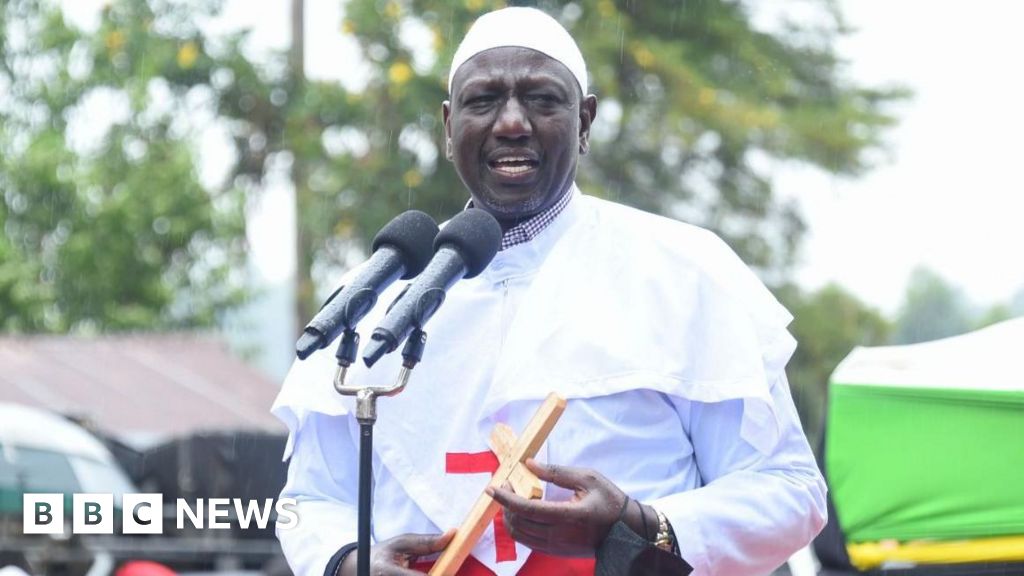By the end of 2023, about 117 million people worldwide had been displaced from their homes by conflict, persecution or other significant threats to their well-being. This is according to the most recent report by the United Nations High Commissioner for Refugees (UNHCR), the UN agency tasked with supporting forcibly displaced people.
The report, released in June, tracks people already recognized as refugees, those still seeking to have their asylum requests approved abroad, and those displaced within their countries of origin.
These nine charts show how the patterns of forced migration have evolved over time, where people are fleeing from, and which countries are receiving the highest shares of displaced people.
1. The number of displaced persons is rising
In 2014, eight in 1,000 people globally were forcibly displaced. In 2023, the number was 14 in 1,000.
This means that worldwide, about 58 million more people have been displaced from their homes now due to humanitarian crises than in 2014. That is equivalent to the entire population of Italy.
2. Most are displaced internally
Of the about 117.3 million displaced people worldwide tracked by the UNHCR, 68.3 million were internally displaced — meaning that they were forced from their homes and communities but remained within the borders of their countries of origin. That number is equivalent to the entire population of the United Kingdom.
The UNHCR figure refers only to the people displaced by violence and war. The Internal Displacement Monitoring Center (IDMC) estimates that 7.7 million more have been displaced by natural disasters and climate change.
3. Most internally displaced persons are in Africa and the Middle East
Of the 68.3 million internally displaced people, about 48% are from African countries and around 21% from the Middle East.
With 9 million internally displaced people, Sudan is home to 14% of the global internally displaced population. Other places with a high number of internally displaced people include Syria (7.2 million), the Democratic Republic of Congo (6.7 million), and Yemen (4.5 million).
Among the 10 countries with the largest populations of internally displaced people, only three are not in Africa or the Middle East: Colombia (5 million), in South America, Afghanistan (4.1 million), in Central Asia, and Ukraine (3.7 million), in Europe.
4. Some countries in Europe have a high proportion of internally displaced people
A significant proportion of the population has also been forced from their homes in other regions, as well — including Europe.
That is the case in Cyprus, where more than 240,000 people — or about 20% of the population — are considered displaced today. Most of them were forced to flee their homes because of the five-decade territorial conflict with Turkey.
The situation is similar in Georgia, Azerbaijan, Serbia and Bosnia-Herzegovina. Often, people can remain displaced for decades — or even generations — after the initial events that forced them from their homes.
5. Nearly 90% of refugees come from only 10 countries
According to the UNHCR, about 43.4 million people worldwide live outside of their countries of origin as refugees or under other international protection programs, such as temporary humanitarian stays. That is more than the entire population of Poland.
Globally, nine in 10 refugees come from Afghanistan, Syria, Venezuela, Ukraine, the Palestinian Territories, South Sudan, Sudan, Myanmar, the Democratic Republic of Congo, and Somalia.
6. Most seek shelter in neighboring countries
The countries that take in the most refugees often share borders with countries of regions where humanitarian crises are occurring. According to the UNHCR report, 69% of the refugees in 2023 were living in a nation that neighbors their country of origin.
Iran, Turkey, Colombia and Jordan are home to the largest numbers of refugees, most of them fleeing from Afghanistan, Syria, Venezuela, and the Palestinian Territories, respectively.
The biggest exception is Germany, which receives hundreds of thousands of migrants from distant nations such as Ukraine, Syria, Afghanistan, Iraq, and Eritrea.
7. Developing countries take in a disproportionate number of refugees
Germany hosts the most refugees of any EU country, with more than 2.5 million. However, Germany hosts fewer displaced people than Iran, Turkey, Jordan, and Colombia.
Home to 11 million people, Jordan hosts the highest number of refugees in proportion to its population. More than 3 million refugees, most of whom come from the nearby Palestinian Territories, live in Jordan, which hosts around 270,000 refugees for each 1 million inhabitants.
Some of the world's poorest countries host the highest number of refugees. Chad, for example, hosts more than 1 million people, despite being one of the least developed nations in the planet. That is more than 60,000 refugees for each 1 million inhabitants, around two times more than the refugee rate in Germany.
8. The gap between asylum requests and decisions has increased
Apart from internally displaced people and recognized refugees, there are about 7 million people who are still waiting for their status as refugees to be recognized or rejected by the host nations where they have applied.
The number of decisions regarding asylum status is not keeping pace with the requests. In 2023, 1.4 million decisions were made worldwide, but there were also around 5.6 million new asylum requests.
The gap between applications and decisions has never been so high. Displaced people are often caught in a legal limbo as the backlog of applications keeps increasing.
9. Displaced people often return to countries that remain unsafe
In 2023, about 1.1 million former refugees went back to their countries of origin. However, returning home is often not safe. Most of them went back to nations that were still facing war and conflict, such as South Sudan and Ukraine.
Edited by: Milan Gagnon
Data and code behind this story can be found in this repository. More data-driven stories can be found here.

 5 months ago
25
5 months ago
25









